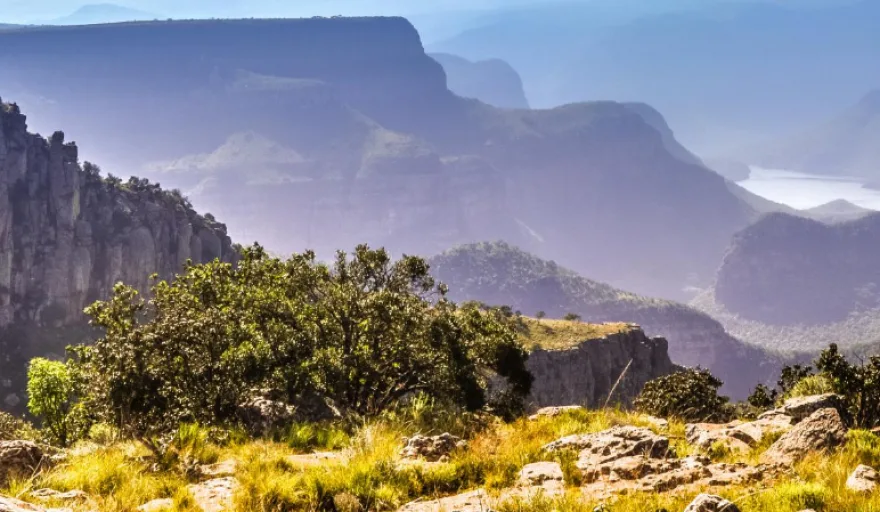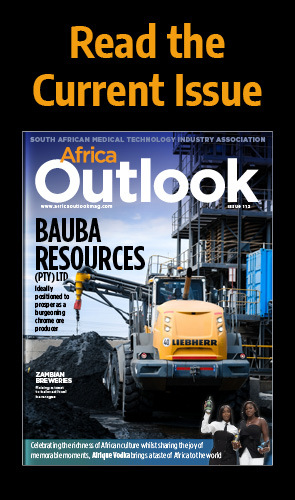INTRODUCTION
South Africa is a beautiful country, and Mpumalanga is its most breath-taking province. It’s located in the east of the country, nudging against the borders of Mozambique and Eswatini – Mpumalanga means “the place where the sun rises” in Swazi and Xhosa.
Mpumalanga attracts nature lovers and thrill seekers in droves, thanks to its soaring mountains, lush forests and the vast expanse of the lowveld. These can be explored on horseback, by hiking or biking. One of the province’s most iconic landmarks is the Blyde River Canyon. It’s the world’s third-largest canyon, with a glassy turquoise river that has carved a deep rift through the Drakensberg Escarpment. The views from some of the highest vantage points are nothing short of incredible.
There are lots of interesting towns scattered through the region, giving you an insight into the local culture and heritage. One of the most popular is Barberton, a town founded during the gold rush. It’s a compact, walkable town with well-preserved historic buildings, set against the striking backdrop of the De Kaap Valley, which boasts some of the oldest sedimentary rock formations in the world.
Thanks to its natural scenery, wide range of outdoor activities and cultural attractions, Mpumalanga is an unmissable stop on any South African itinerary.
THE BUSINESS END
Mpumalanga is a predominantly agricultural province. The contrasting climates between Highveld and the Lowveld regions mean a wide variety of crops can be grown here – examples include soybeans, sugarcane, coffee and citrus fruits. 14 percent of the land area is used for livestock grazing. The province also exports macadamia nuts – a fast-growing sector. Companies such as McCain, Nestlé and Pepsico rely on the province’s rich agricultural produce.
Mining is another profitable activity for Mpumalanga, with over 80 percent of coal production occurring in the province. Other minerals, such as chromite, magnetite and vanadium, are found here in significant quantities. Meanwhile, Nkomati Mine is the only nickel mine in South Africa.
The local government have ambitious plans to expand the industrial base of their economy, with a focus on agri-processing and value change development. They are also trying to increase foreign investment from these sectors into the area.
Tourism is also a major economic driver in the region. The Kruger National Park is a particularly popular attraction, drawing in thousands of tourists every year. Organisations such as Mpumalanga Tourism and Parks Agency are keen to grow tourism sustainably, conserving the natural resources and ecosystems of the province.
Q&A WITH THE MPUMALANGA TOURISM AND PARKS AGENCY
The Mpumalanga Tourism and Parks Agency was born out of a merger between the now defunct Mpumalanga Parks Board and the Mpumalanga Tourism Agency in 2005. The initial vision of the entity is to foster, promote, sustainably develop and market tourism. Furthermore, the agency is tasked with managing the biodiversity conservation in the province. We sat down with Xolani Mthethwa, the Executive Manager, to find out more.
Since inception, how has the Mpumalanga Tourism and Parks Agency developed and progressed in terms of its key objectives and the messages it tries to get across?
Xolani Mthethwa (XM): The agency has made tremendous strides to meet its key objectives since inception. This includes developing tourism and increasing tourist arrivals, particularly international arrivals. Our biggest drive is to increase the number of domestic tourists visiting the province, because domestic tourism is the core of the travel industry.
How would you say Mpumalanga and its parks have developed in recent years as a hub for conservation and biodiversity?
XM: Our goal is to provide an effective conservation of biodiversity and ecosystems in the province by developing and effectively managing protected areas, conserving natural resources and implementing the People and Parks program. The overall aim of this program is to address issues at the interface between conservation and communities – in particular, to provide tangible benefits to communities displaced to pave the way for the establishment of protected areas. Hundreds of jobs have been created, allowing local people to benefit economically while improving the infrastructure of our national parks.
Earlier this year we collaborated with the Department of Tourism to run an accredited training program for local tourism monitors. Recently, 210 students graduated – they will ensure visitor safety and service excellence at attractions in the province.
What, if anything, are the Mpumalanga Tourism and Parks Agency doing to ensure the appeal of the province as a business travel destination?
XM: Within the organisation, strides are being made to focus on business travel. In 2016, an internally based Mpumalanga Convention Bureau was launched. Since then many meetings, conferences and incentives have been held in the province. The leading business travel venue for the province is the Nombolo Mdluli Conference Centre at Skukuza in the Kruger National Park.
Why, in your opinion, should someone visit Mpumalanga?
XM: The province offers what we call WASCH: Wildlife, Adventure, Scenery, Culture and Heritage. Visitors will find these offerings in abundance in Mpumalanga. Wildlife can be found in the well-known Kruger National Park and Sabi Sands Private Game Reserves. For adventure, we offer abseiling, river rafting, fly fishing, rock-climbing and bush walks; for scenery, we have the third largest and the greenest canyon in the world (Blyde River Canyon), Three Rondavels, God’s Window, Barberton Makhonjwa Mountains (the first World Heritage Site for Mpumalanga); for culture, we have the famous Ndebele painter, Dr Esther Mahlangu; and for heritage, we have the liberation heritage routes in Gert Sibande and Nkangala regions.
Furthermore, we are a riot of colours from different nations, each calling Mpumalanga home. This includes the Swazi, the Ndebele, the Tsonga, the Pedi, the Zulu, the Afrikaans and English-speaking people. There are a variety of places to eat and drink across the province. I would recommend a taste of township lifestyle at Chaf ZAR in KaNyamazane just outside Mbombela.
What trends are transforming the tourism industry in Mpumalanga at present? How are you responding to these trends?
XM: One current trend is that the many international tourists have a ‘wait and see’ attitude and do their bookings closer to their travelling time. We make provisions for last minute bookings through the travel packages that are posted online for a longer period.
How do you see Mpumalanga developing as a business travel hub over the next year to two years?
XM: There are more new events scheduled to happen in the province in future, including some signature events. In 2018, an events strategy was approved to guide the organisation in the development of new business travel initiatives, which included guidance on bidding for the new events.
Are there any plans or projects in the pipeline that you wish to highlight?
The agency is finalising the appointment of an investor who will build and operate a Skywalk project at God’s Window, a scenic area offering a panoramic view of the Lowveld. The Skywalk will be the area’s newest attraction, modelled on the Skywalk concept found at the USA’s Grand Canyon. If all goes well, the project should be completed towards the end of 2020.
All in all, the future of the tourism industry looks bright not only for Mpumalanga but for the whole of South Africa. Tourism is the new ‘gold’ for South Africa.
IN FOCUS: MBOMBELA
Mbombela (formerly Nelspruit) is the business centre of the Lowveld Region. It’s best known for being a gateway to the Kruger National Park – this, and plenty of other wilderness areas, are easily accessible from the city. However, Mbombela is also a thriving metropolis with fantastic infrastructure, such as hotels, conference centres and banks.
One of Mbombela’s attractions as a business destination is its accessibility and transport links to the rest of South Africa. There are, for example, seven daily flights from Johannesburg. It’s an easy four to five-hour drive from Pretoria.
The city boasts over 1,568 graded hotel rooms, including 54 five-star rooms, and several convention centres. For a unique conference experience, delegates can stay in safari lodge convention centres just outside the city, such as the Eco Eden Bush Lodge.
Mbombela boasts several large malls, bars and a thriving food scene, with restaurants serving cuisine from around the world. North of the city centre you’ll find Lowveld National Botanical Garden, a sun-dappled park with a profusion of tropical flora and fauna, home to almost 250 bird species.
TRANSPORT LINKS
The region’s main airport is Kruger Mpumalanga International airport, which opened in 2001 and has seen three million passengers pass through its doors (around 260,000 per annum). The airport is the gateway to the Kruger National Park and is serviced by airlines such as British Airways and South African Airways. There are a few scheduled flights a day to Johannesburg – a transport hub for many international flights. The smaller Hoedspruit airport also operates scheduled flights to Cape Town and Johannesburg.
The city of Mbombela (formerly known as Nelspruit) is a transport hub for the region. The city has a good network of long-distance buses and shuttle services, connecting you to different destinations in and around the region. City Bug, for example, operates shuttles to Durban, Pretoria and Bloemfontein.
However, outside of main destinations, there is little in the way of public transport. Many tourists get around by hiring a car. There are rental agencies, such as Avis, in Mbombela. Roads are of good quality overall, although you might encounter potholes on smaller roads.



























